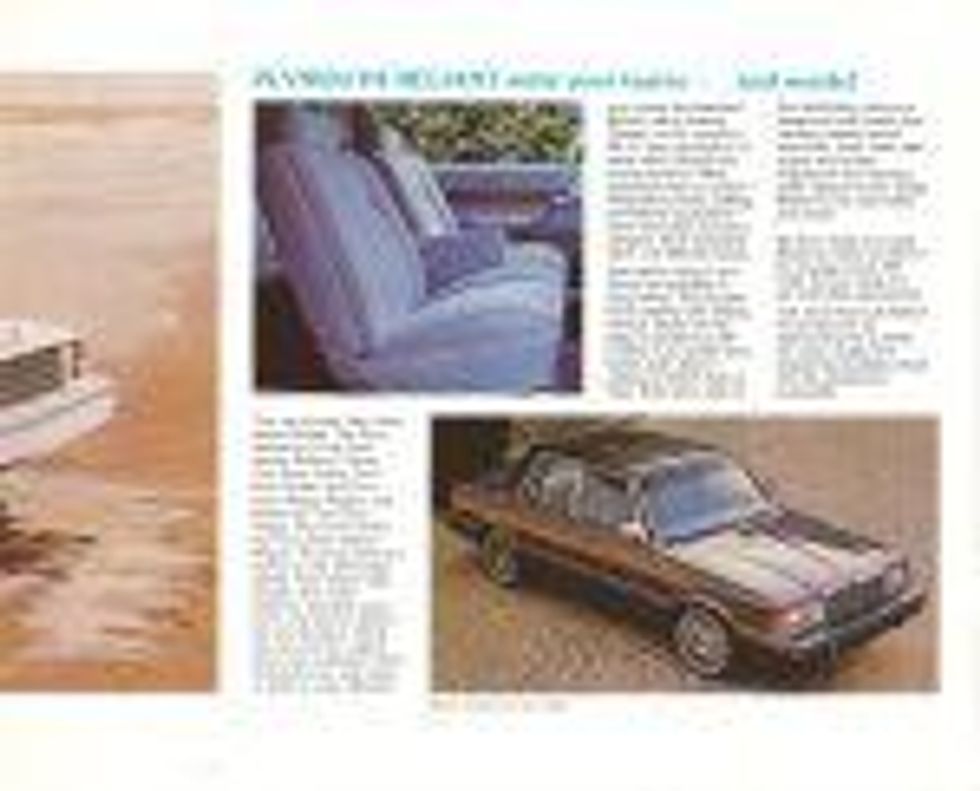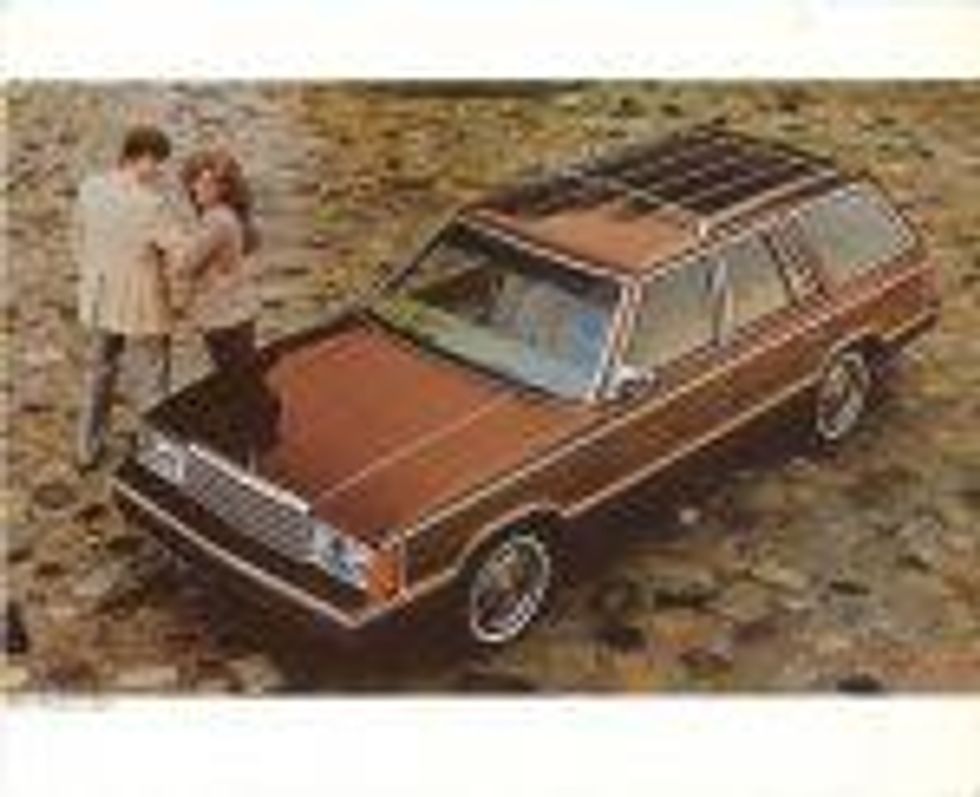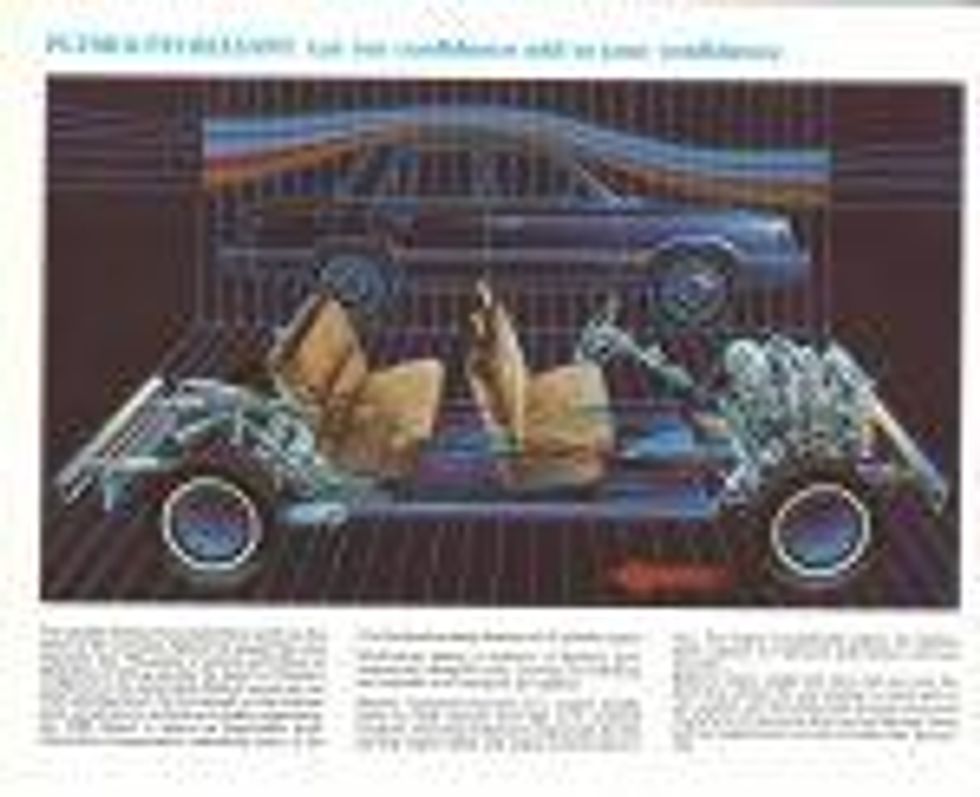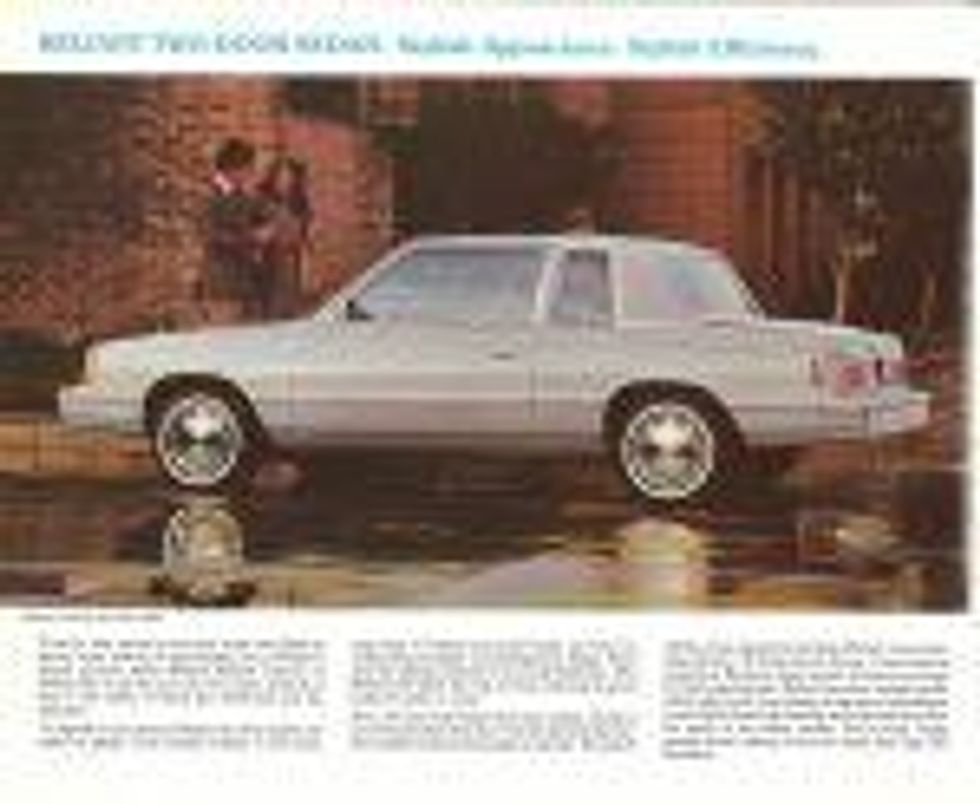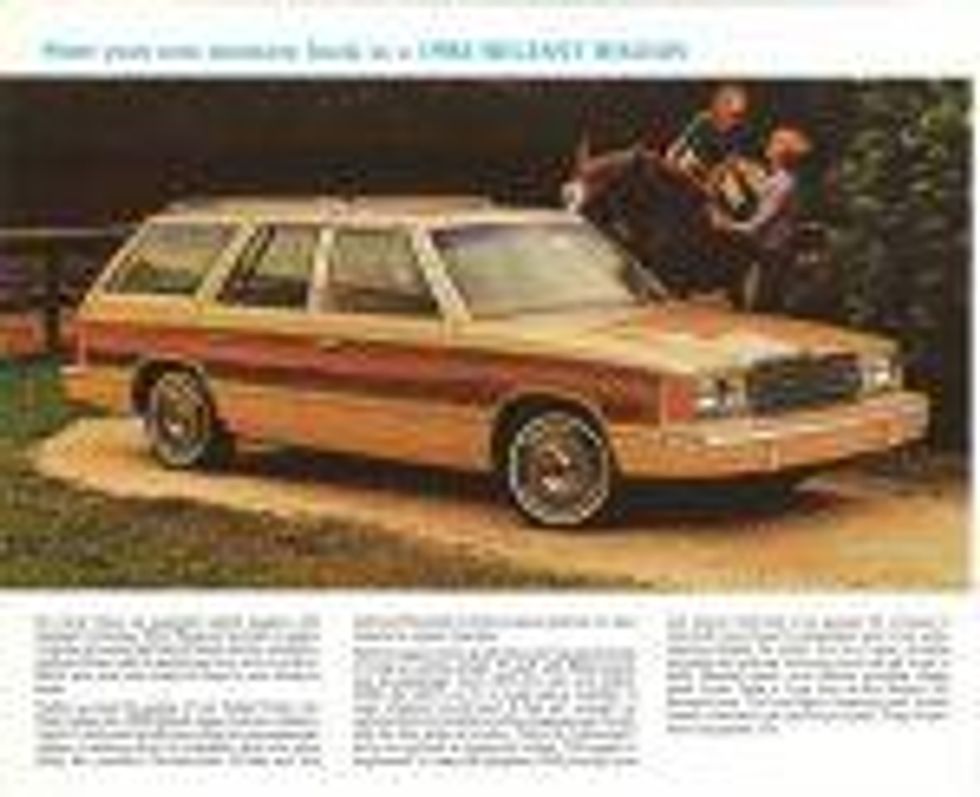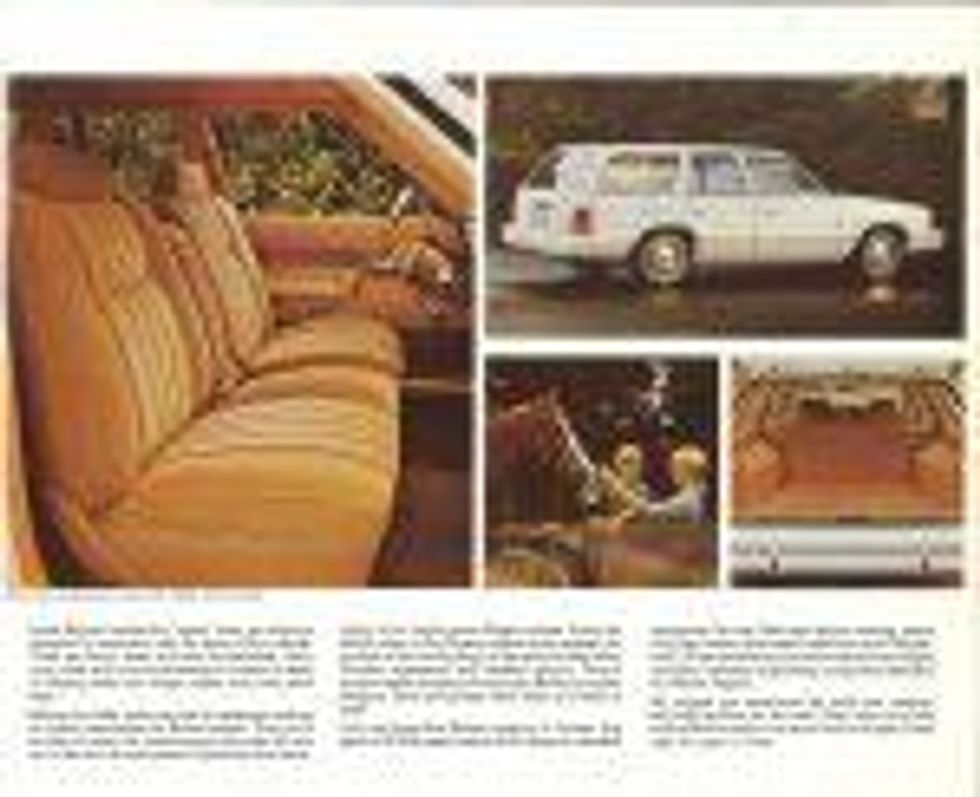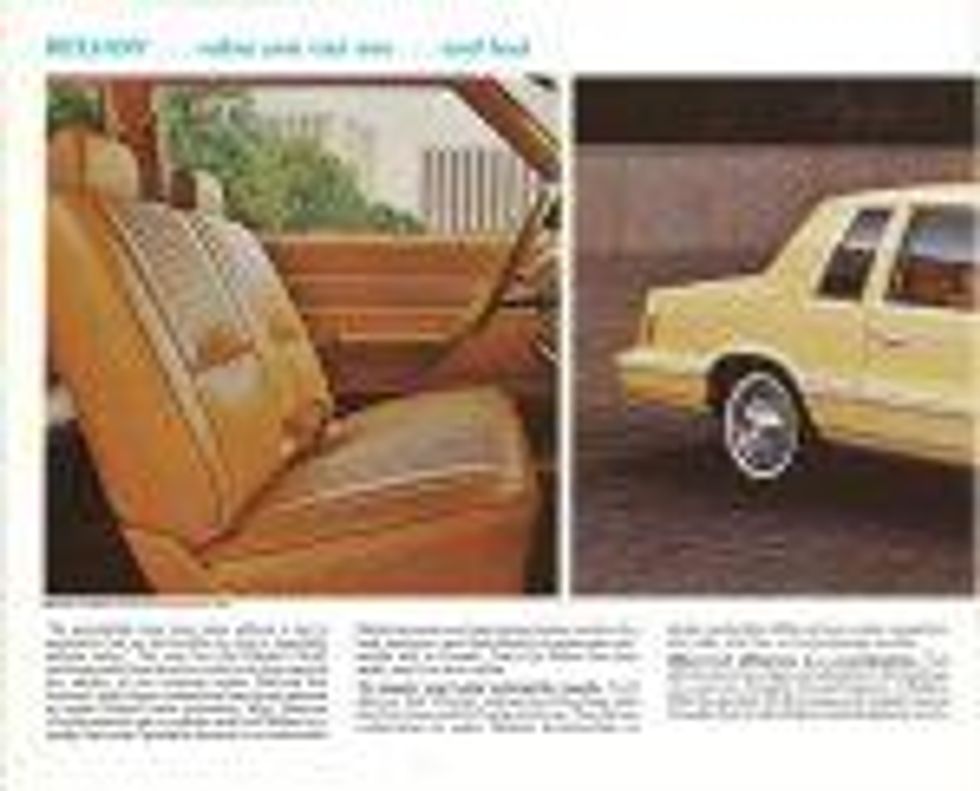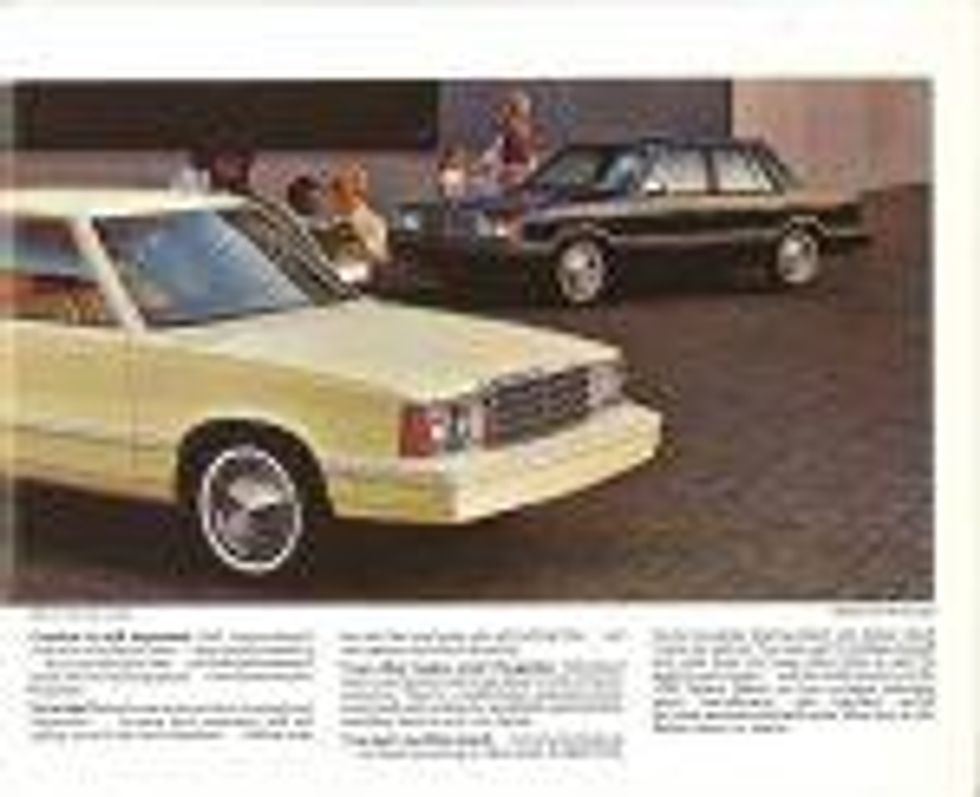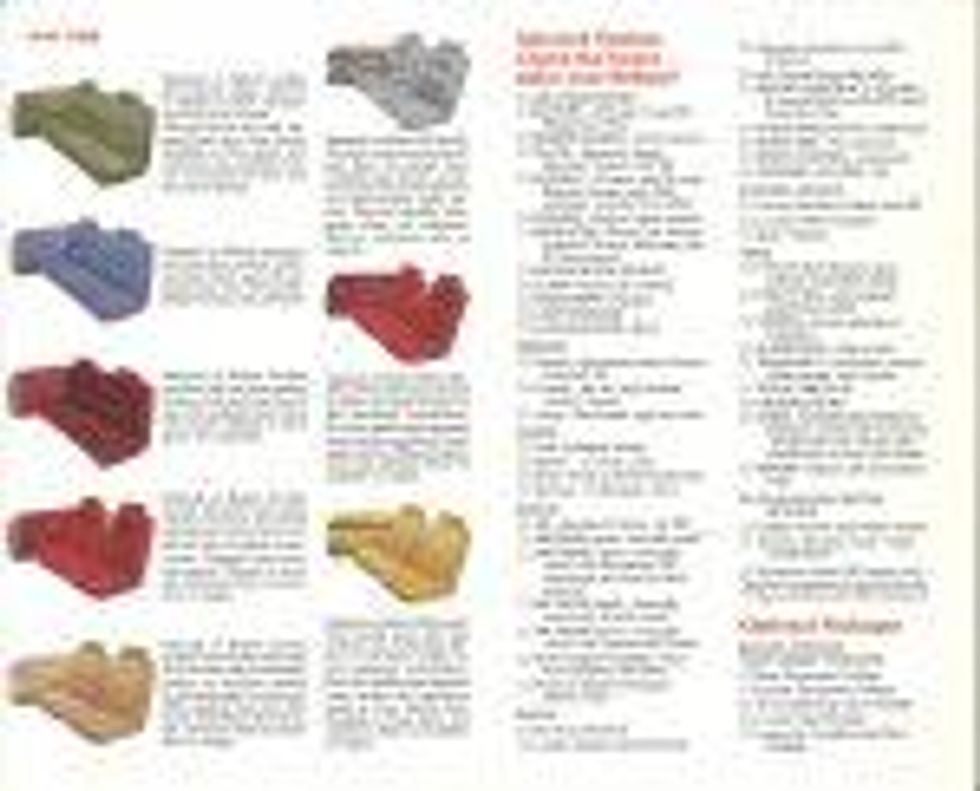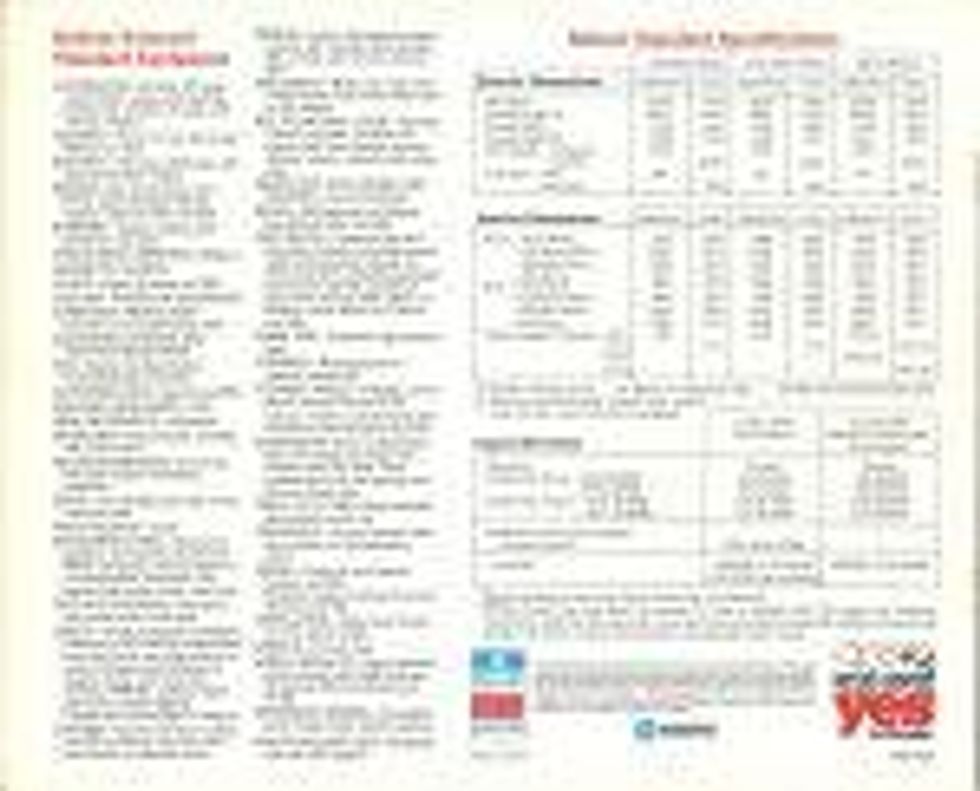
Buy
Resources
Entertainment
Magazine
Community
Images are from the brochure collection of the author.
It's impossible to understate the importance of the compact, front wheel-drive K cars to the Chrysler Corporation in the early 1980s, as the automaker's future was literally riding on those cars. Replacing the Volare and Aspen, the Plymouth Reliant and Dodge Aries sold strongly right out of the gate, moving 100,137 and 114,631 copies, respectively, in their first (1981) model year. Refinement was the name of the game for 1982, when these crisply-styled two- or four-door sedans and four-door station wagons received numerous mechanical upgrades. Those refinements paid off in still better sales figures, with Dodge moving 104,663 and Plymouth, an even stronger 139,223 Reliants.
This K platform would spawn numerous additional variations, including the Dodge 400, Dodge 600/Plymouth Caravelle, Chrysler Laser/Dodge Daytona, and of course, the game-changing minivans.
Considering that an awful lot of them were built through 1989, when they were effectively replaced by the Plymouth Acclaim and Dodge Spirit, have you ever experienced a Reliant or Aries?
I have a personal interest in the 1982 Reliant, as my parents traded in their much-loved but unreliable 1975 Audi 100LS on a new, Light Seaspray Green Reliant Custom station wagon -four-speed, vinyl bench seats, AM radio, pretty fancy!- at Young's Motors, my father being swayed by Lee Iacocca's televised promise of a $500 rebate. I picked up this brochure at Hershey one year, and it wasn't until I got it home and really looked at it that I realized it was actually a Canadian-spec piece! I'm still on the lookout for an American version, but in the meantime, behold the wonder that was Plymouth's contemporary cash cow.
Click on the brochure images below to enlarge.
Recent
Millions upon millions of people relied on Checker taxis to shuttle them around cities throughout the U.S. and beyond. From office to airport or hotel to restaurant, Checker cabs were noted for their durability and longevity. Checker was in the cab-building business from well before World War II, but the design of its Model A8, introduced in 1956, practically defined the word “taxicab” for several generations of Americans. Specific regulations for passenger and luggage space along with wheelbase requirements resulted in few changes to the overall Checker design until the Kalamazoo, Michigan-based manufacturer built its last vehicle in 1982.
Though its model range was fairly limited, none could match the scale of the eight-door, 12-passenger, extended-wheelbase Aerobus, a limousine/wagon mashup intended for service to and from airports with an abundance of passengers. Today such a role is tackled by shuttle vans, but for a period from the early 1960s through the 1970s, it was handled by vehicles like this 1972 Checker Aerobus now on Hemmings Auctions.

Based on the Marathon four-door station wagon, the Aerobus was introduced in 1962 with a two-model range. One was a nine-passenger model with three pairs of passenger doors, and the other a longer 12-passenger version with four pairs of doors, such as the one now listed on Hemmings.com. A standard Checker taxi sedan from 1956 to 1982 rode on a 120-inch wheelbase. Limousine models sported a 129-inch wheelbase. The nine-passenger Aerobus had a wheelbase nearly three-feet longer than the sedan at 154.5 inches. Finally, the 12-passenger version had a distance between the axles of 189 inches. Its overall length was a hair under 270 inches, meaning it was over 22 feet long. For comparison, a current 2024 Ford F-350 Super Duty Crew Cab with a full eight-foot bed rides on a 176-inch wheelbase and has an overall length of 266 inches. That’s how long the big Aerobus was! Some sources indicate that the bigger Aerobus holds the record for the longest production car ever made, though volume was never particularly high.
Checker advertised the Aerobus not only for airport transportation as the name implies, but also “Perfect for schools, institutions, resorts, motels, hotels, inter-plant transportation, employee pick-up—even large families! It’s the practical idea in mass transportation.” Some model years, Checker used the name “Aerobus Limousine” for the model, incorporating both the six- and eight-door versions under that moniker.

The Aerobus included the features of the A8 that were carried over to the A9 and later A11 models, such as the high roofline and tall doors that allowed for easier passenger access. Low, flat floors contributed to the roominess as well. The commodious nature of the Checker cab that made it a leader in its field fully carried over to the Aerobus, which not only accommodated 12 people, but also plenty of luggage behind the fourth row. The rear cargo compartment glass was protected by an internal cage of sorts made of stainless-steel strips.
Underpinning that massive wagon was a modified version of the Checker sedan’s frame. Unlike some extended-wheelbase limousines, the Aerobus’s frame was not cut and then extended. Rather, the side rails were one-piece units fabricated especially for the job. Standard equipment included power steering and power brakes and a V8 engine. During its production lifetime from 1962 through 1977, the Aerobus featured both Chrysler and Chevrolet engines. At first, Checker sourced a Mopar Poly 318-cu.in. powerplant, which was later supplanted with a Chevrolet small-block V8. For a while, that meant a 327-cu.in. version but later a 350 V8, as seen on this 1972 version, when the engine was rated at 215 horsepower and 335 lb-ft of torque.

Other features on the Aerobus included a 23-gallon fuel tank, a heavy-duty alternator, and two additional floor-mounted auxiliary heaters for the rear passengers. Much of the chassis and suspension consisted of heavy-duty components needed to accommodate the vehicle with a curb weight of nearly two-and-a-half tons.
Variants of the Aerobus included the Convoy, which Checker billed as a “12-passenger security van,” a euphemism for a prisoner transport vehicle. The second and third row seats were removed and replaced by a pair of inward facing benches. All of the seats behind the front row were enclosed in a welded steel cage with a single door at the front that, when open, would allow passengers to exit a right-side passenger door. The front passenger sat, reserved for a guard, faced rearward toward the other passengers, but outside the cage. It is believed that at least one Convoy prototype was built, with any sales unknown and no examples believed to exist today.

Checker's Aerobus has made plenty of appearances in popular culture. In the film Catch Me If You Can, Leonardo DiCaprio’s character, dressed in a pilot’s uniform, emerges at the airport drop-off from an eight-door Aerobus along with a bevy of flight attendants. The distinctive Aerobus has made plenty of other appearances over the years in other American and overseas productions, including in the original Hawaii Five-O, the film Medium Cool, and, appropriately enough, the original disaster movie Airport.
This 12-passenger, 1972 Checker Aerobus now listed on Hemmings Auctions, features a paint scheme that pays homage to four very distinct taxi styles in four colors, including the near ubiquitous yellow. A black-and-white checkered stripe runs the length of each side and additional taxi components include what appears to be a New York City taxi sign on the roof along with a fare schedule posted on the side.

Power comes from what is believed to be the original Chevrolet-sourced 350 cu.in. V8, which puts power to the rear whiles via Turbo Hydra-Matic three-speed automatic. The seller’s notes indicate some mechanical upgrades with the installation of a stronger rear end and rear axles, along with precision bearings. A modern audio system has also been installed as well as a backup camera, the latter surely an essential when navigating such a long vehicle in everyday traffic.
Head on over to Hemmings Auctions to take a closer look at this mega-extended wagon. Make a bid, but be sure to consider who will be on your guest list when you're driving this unique Checker Aerobus.
Keep reading...Show Less
YouTube / Techno Fusion HD
Some burble, others crackle and pop, and others flat out roar. From the hum of a four-cylinder engine to the soulful wail of a powerful V12, people have been enthralled with engine noises since 1807, when one of the first working internal combustion engines called the Pyréolophore was built. Car enthusiasts today often favor the sound of a beefy V8 engine, particularly out of muscle cars, but this video takes us back even further, before there was direct injection, computer-controlled timing advance, and pre-detonation sensors.
The sounds of big-bore antique and vintage engines hit differently, each offering its own unique symphony and vibrations strong enough to move the soul.
“You can say the engine is really like an orchestra to some extent,” says Gabriella Cerrato, the director of engineering services for HBK, a consultancy firm that assists car manufacturers with managing the noise, vibration of their vehicles. The below video is the ultimate orchestra performance.
Listen to over 12 minutes of fascinating engine sound clips from antique powerplants such as a chugging 196 Bessemer engine, a larger than life 16-liter Deutz V12 diesel, a lively revving 200kva V8 Detroit engine, a Lister Diesel engine, a PWRS Loco engine from a 1955 Fowler Shunter, a one- cylinder, 27-liter, two-stroke Old Ideal diesel engine, and several more. You’ll also hear sounds from classic hot rods, such as a blown 540 cubic-inch big-block V8. Wait until the end to tickle your eardrums with a massive 1,150-horsepower Caterpillar D399 engine and a vintage 8v71 Detroit Diesel engine.
Big Crazy Old Engines Start Up Sound That Will Blow Your Mindyoutu.be
Keep reading...Show Less





